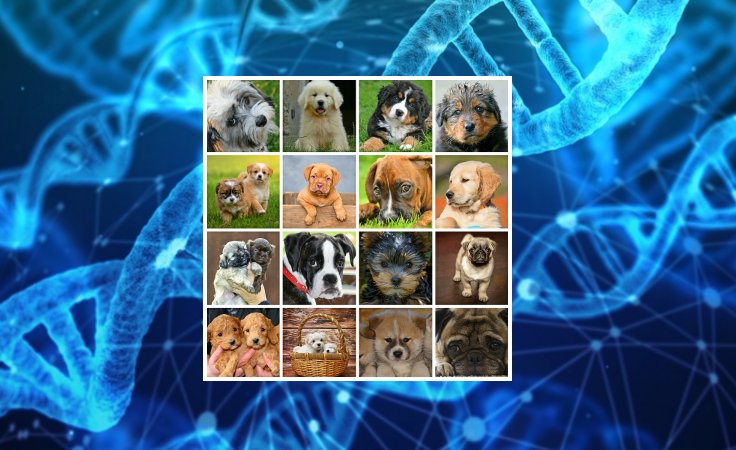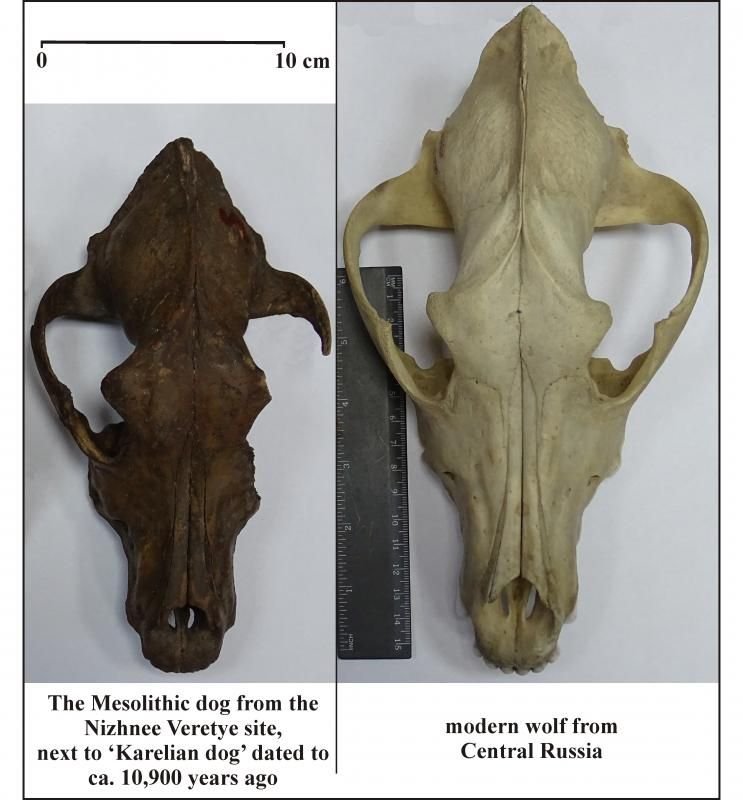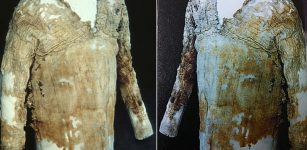DNA Sheds Light On Ancient History Of Dogs All The Way To The Ice Age
Jan Bartek – MessageToEagle.com – Dogs are our beloved pets and they have been our companions for a very long time, or maybe even longer than we previously thought.
In the Chauvet Cave in France, there are extraordinary paintings that are between 20,000 and 30,000 thousand years old. Here we find what some considered to be the oldest evidence of human-canine relationship.
But what can we learn about the ancient history of dogs by studying DNA? In a groundbreaking study archaeologists from 10 countries have presented evidence clearly showing that there were different types of dogs more than 11,000 years ago in the period immediately following the Ice Age.

The research team sequenced ancient DNA from 27 dogs, some of which lived up to nearly 11,000 years ago, across Europe, the Near East and Siberia.
Scientists discovered that by this point in history, just after the Ice Age and before any other animal had been domesticated, there were already at least five different types of dog with distinct genetic ancestries.
Some of the variations you see between dogs walking down the street today originated in the Ice Age.
This finding reveals that the diversity observed between dogs in different parts of the world today originated when all humans were still hunters and gatherers.
“Some of the variation you see between dogs walking down the street today originated in the Ice Age. By the end of this period, dogs were already widespread across the northern hemisphere,” Pontus Skoglund, author and group leader of the Crick’s Ancient Genomics laboratory said in a press statement.
This study of ancient genomics involves extracting and analyzing DNA from skeletal material. It provides a window into the past, allowing researchers to uncover evolutionary changes that occurred many thousands of years ago.
The team showed that over the last 10,000 years, these early dog lineages mixed and moved to give rise to the dogs we know today. For example, early European dogs were initially diverse, appearing to originate from two highly distinct populations, one related to Near Eastern dogs and another to Siberian dogs. However, at some point this diversity was lost, as it is not present in European dogs today.
“If we look back more than four or five thousand years ago, we can see that Europe was a very diverse place when it came to dogs. Although the European dogs we see today come in such an extraordinary array of shapes and forms, genetically they derive from only a very narrow subset of the diversity that used to exist,” Anders Bergström, lead author and post-doctoral researcher in the Ancient Genomics laboratory at the Crick explained.
The researchers also compared the evolution in dog history to changes in human evolution, lifestyles and migrations. In many cases comparable changes took place, likely reflecting how humans would bring their dogs with them as they migrated across the world.

Credit: E.E. Antipina
But there are also cases when human and dog histories do not mirror each other. For example, the loss of diversity that existed in dogs in early Europe was caused by the spread of a single dog ancestry that replaced other populations. This dramatic event is not mirrored in human populations, and it remains to be determined what caused this turnover in European dog ancestry.
“Dogs are our oldest and closest animal partner. Using DNA from ancient dogs is showing us just how far back our shared history goes and will ultimately help us understand when and where this deep relationship began,” Greger Larson, author and Director of the Palaeogenomics and Bio-Archaeology Research Network at the University of Oxford said.
“Just as ancient DNA has revolutionized the study of our own ancestors, it’s now starting to do the same for dogs and other domesticated animals. Studying our animal companions adds another layer to our understanding of human history,” Ron Pinhasi, author and group leader at the University of Vienna said.
See also: More Archaeology News
While this study provides major new insights into the early history of dog populations and their relationships with humans and each other, many questions still remain. In particular, research teams are still trying to uncover where and in which human cultural context, dogs were first domesticated.
Written by Jan Bartek – MessageToEagle.com – AncientPages.com Staff Writer










